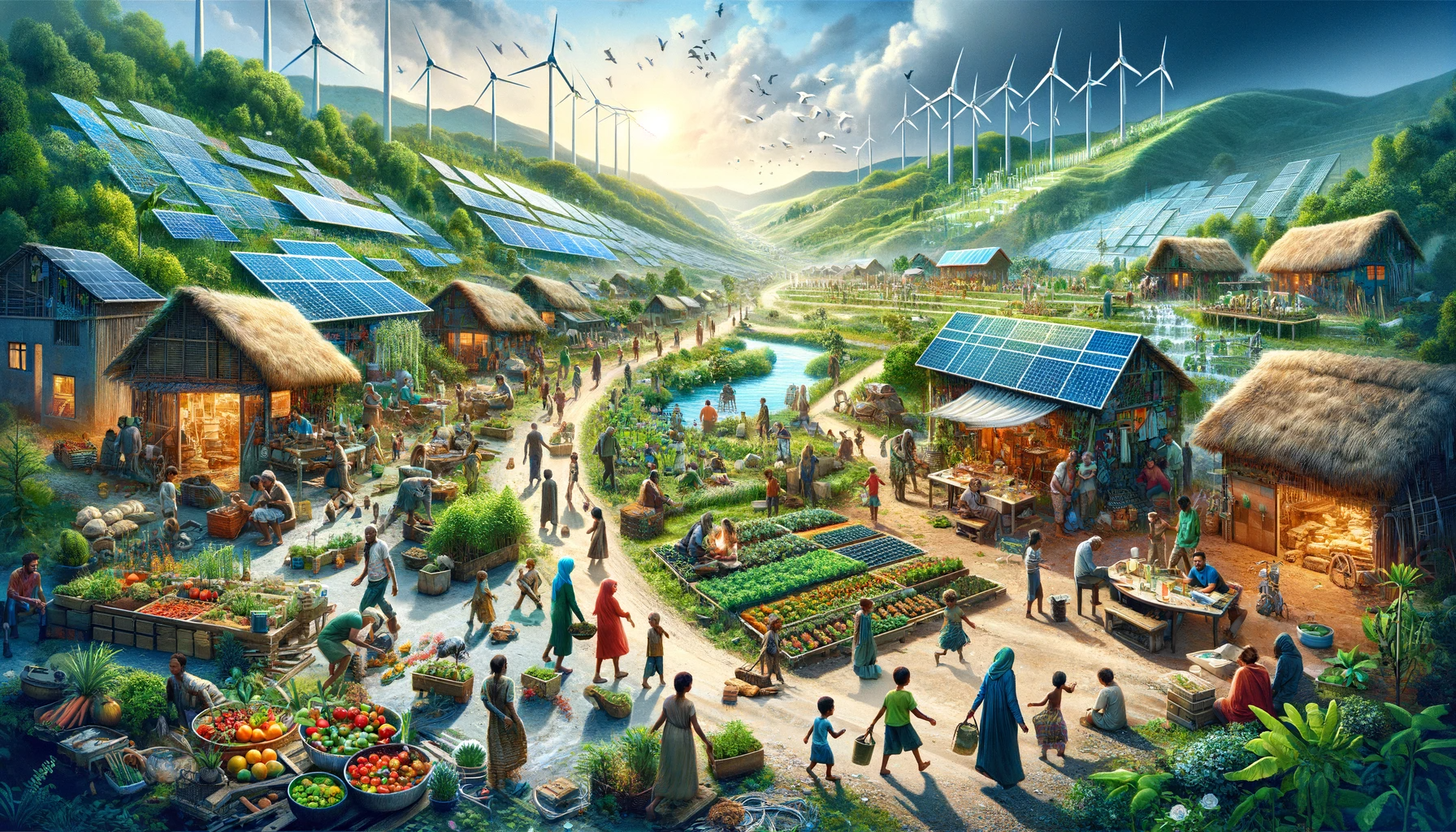In the global effort to eradicate poverty, the concept of sustainable poverty alleviation has gained prominence, offering an approach that not only addresses immediate economic needs but also ensures long-term environmental sustainability. This approach recognizes that poverty and environmental degradation are often interlinked, and solutions must address both to be effective and enduring.
Understanding Sustainable Poverty Alleviation
Sustainable poverty alleviation involves strategies that empower impoverished communities economically while ensuring the conservation and sustainable use of environmental resources. This dual focus is crucial as impoverished communities are often the most affected by environmental degradation, and their livelihoods are closely tied to natural resources.
Economic Empowerment through Sustainable Practices
Key to this approach is the promotion of sustainable livelihoods. This includes providing access to clean energy, sustainable agriculture practices, and eco-friendly entrepreneurial opportunities. Such initiatives not only create economic opportunities but also reduce environmental impact. For instance, microfinance in renewable energy projects allows low-income households to access clean energy, improving their quality of life while reducing dependence on fossil fuels.
Education and Capacity Building
Education and skill development are vital components of sustainable poverty alleviation. By equipping individuals with knowledge and skills in sustainable practices, they can secure better jobs and contribute to their community’s economic and environmental well-being. This includes education in sustainable farming techniques, water conservation, and waste management.
Policy Integration and Collaborative Efforts
Effective policy integration is essential for sustainable poverty alleviation. Policies that incorporate both poverty reduction and environmental sustainability can create synergies, making them more effective than those that address these issues in isolation. Collaborative efforts between governments, NGOs, and local communities are crucial for developing and implementing such policies.
Challenges and the Way Forward
Despite its potential, sustainable poverty alleviation faces challenges, including funding constraints, lack of awareness, and resistance to changing traditional practices. Overcoming these challenges requires continuous effort, innovation, and collaboration among all stakeholders.
Corresponding Sustainable Development Goals (SDGs)
Sustainable poverty alleviation aligns with several United Nations Sustainable Development Goals (SDGs), notably:
- SDG 1 (No Poverty): Aims to end poverty in all its forms everywhere, which is the primary goal of poverty alleviation.
- SDG 8 (Decent Work and Economic Growth): Promotes inclusive and sustainable economic growth, employment, and decent work for all.
- SDG 12 (Responsible Consumption and Production): Ensures sustainable consumption and production patterns, a key aspect of environmental sustainability in poverty alleviation.
Conclusion
Sustainable poverty alleviation is not just a noble goal but a necessary approach for a more equitable and sustainable world. By integrating economic empowerment with environmental sustainability, we can help lift communities out of poverty while preserving the planet for future generations.
References
- “Sustainable Livelihoods and Poverty Reduction.” International Journal of Sustainable Development. Strategies for Sustainable Livelihoods.
- “Microfinance and Renewable Energy.” Journal of Environmental Economics. Impact of Microfinance in Renewable Energy.
- “Education for Sustainable Poverty Alleviation.” Educational Review. Role of Education in Poverty Alleviation.
- “Integrating Environmental Sustainability in Poverty Reduction Policies.” Environmental Policy and Governance. Policy Integration for Poverty and Environmental Sustainability.
- United Nations Sustainable Development Goals. UN SDGs Related to Poverty and Sustainability.


